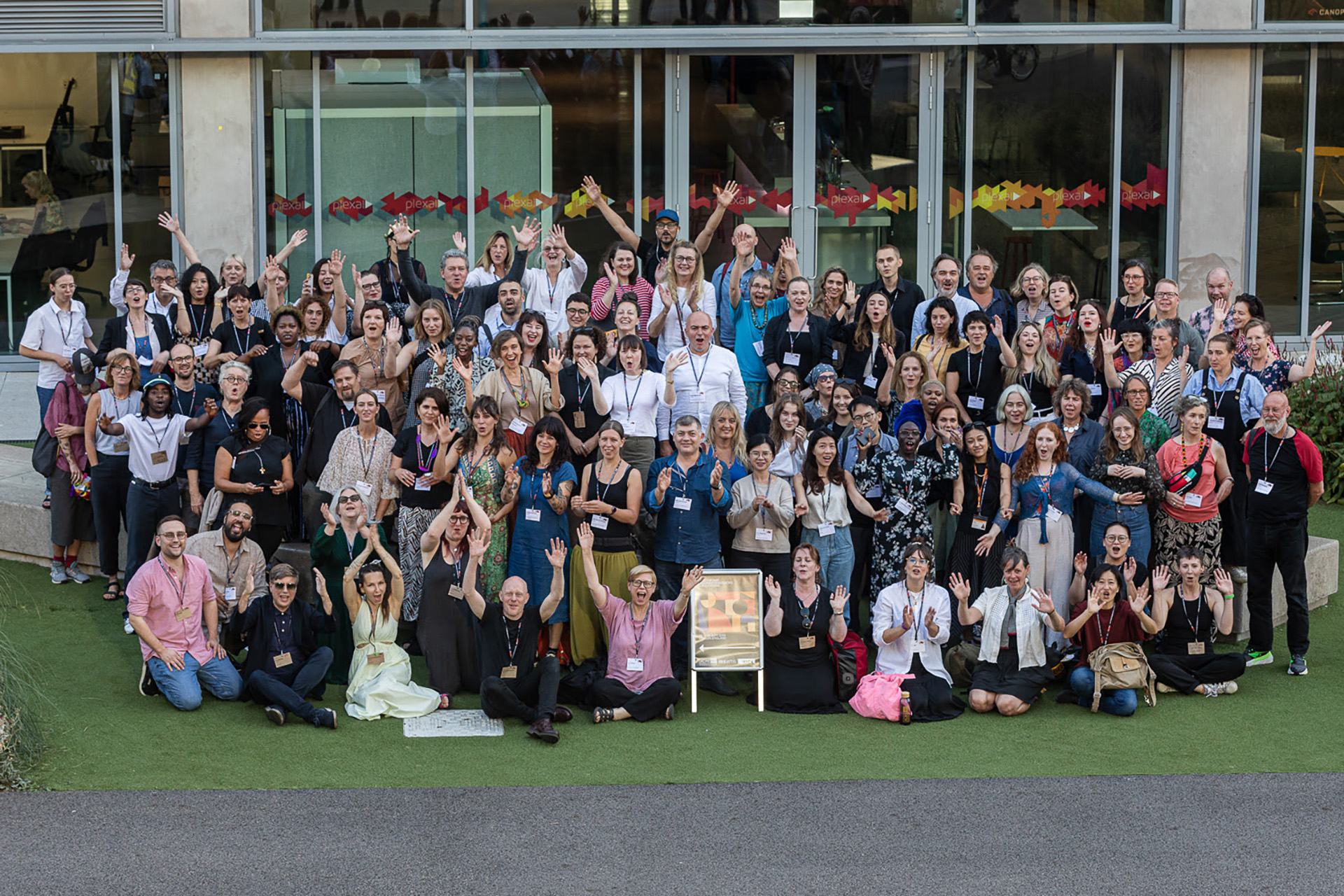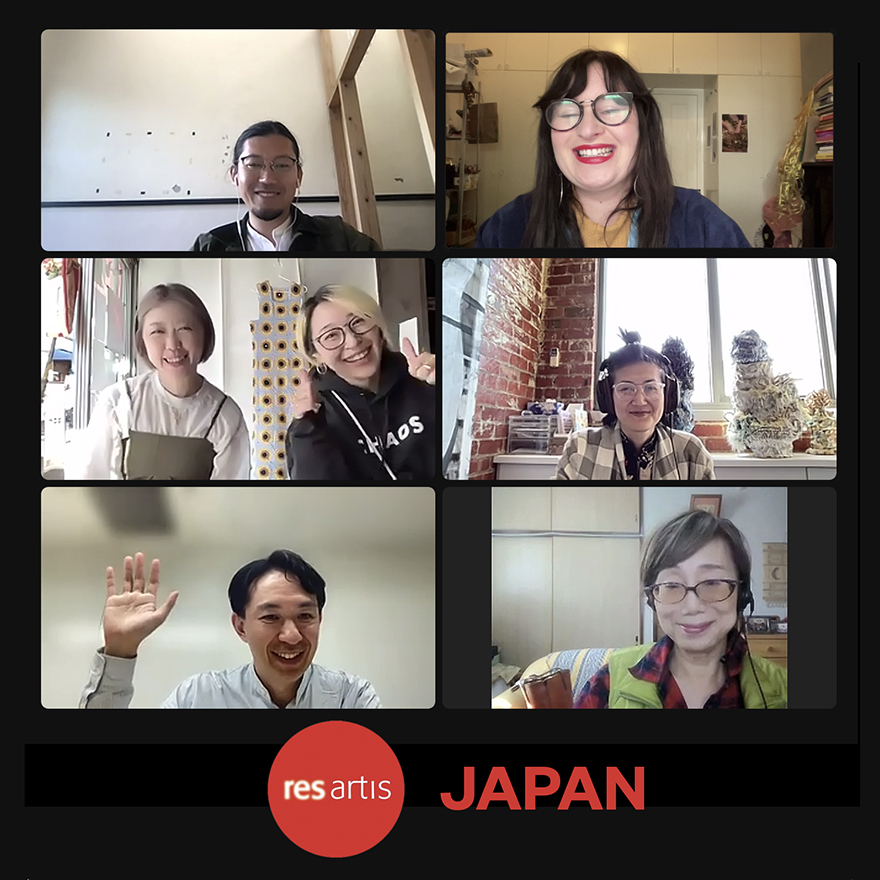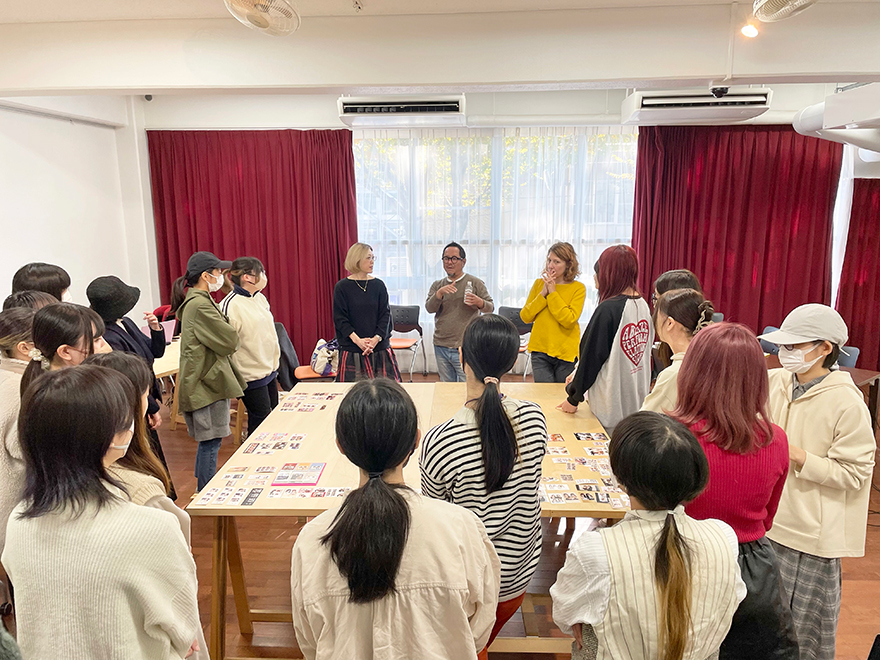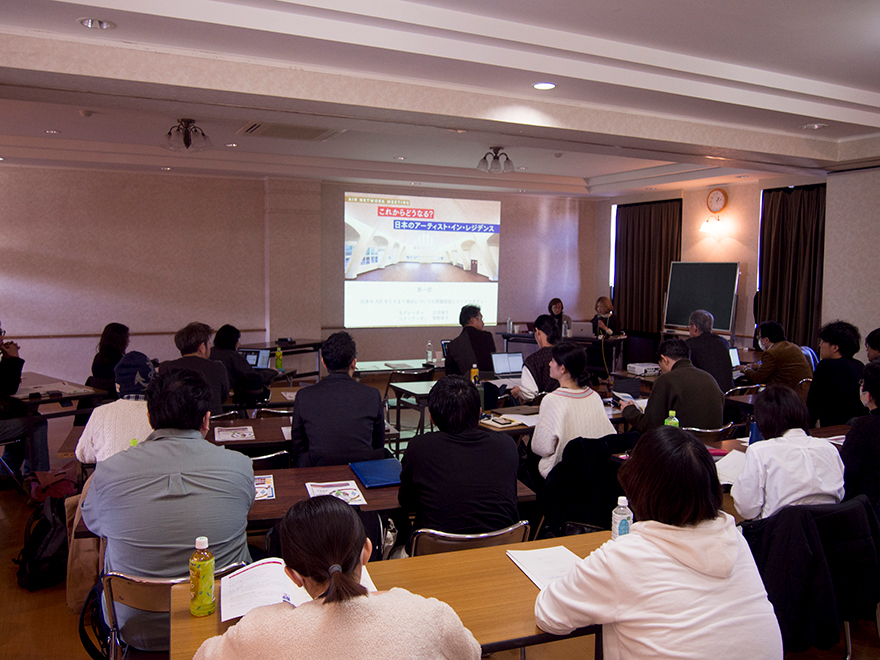Artist-in-Residence (7): the last
Networks that connect with the world, AIRs that connect to the future
By Hinuma Teiko

Image courtesy of Hydar Dewachi.
◉ AIR programs and networking
Here I’d like to offer a few thoughts on networks and networking, important elements of the artist-in-residence experience. I often remind myself not to forget the whole premise of the AIR: that it is for the benefit of the artist. If an artist has a good AIR experience, that will translate to good memories, and presumably the AIR will also come across as a good thing to others. So when we say a “good” AIR, what kind of program, environment are we talking about? More than just having an ample support system in place, with all the staff, facilities and funds for the artist to undertake their hoped-for research and expressive activities. Just as for humans a good experience is not simply one in which everything eventuates in the manner we are hoping for, smoothly and enjoyably, but one in which things do not always go to plan, but also come about in part at least by repeated trial and error, and treading a tough, stressful path, in an AIR research and the process of moving toward new expression is more vital than the works that emerge from it, most important being what takes place along the way, and how the artist will make use of it in future. And one other thing: key to making that tough, stressful journey a good experience, is how trust is built between artist and AIR provider. It is vital to have the right people in the right place, that is, a good match between people and place that allows both to flourish: the artist who chooses the AIR as setting for their activities, and provider who chooses the AIR as a method of achieving a certain objective. Indispensable to ensuring all this, is networking. Networks are for obtaining information on each other to ensure a good match, and also where the personal connections are formed that will help to sustain the artist through a long career.
Allow me here to mention once again Kadota Keiko, who gave me my first AIR job and taught me a great deal. Deeming networking a requisite for building the foundations of AIR programs in Japan and boosting their presence both domestically and overseas, Ms. Kadota advocated providing a place for those running AIR programs in Japan to share information about issues and solutions for running sustainable operations, and learn from each other, and to this end in 2003 launched the J-AIR Network meetings. And because AIR programs are a setting for international exchange through creative activity, and it was important for those on the AIR frontline and the embassies in Japan that are the contact point for that exchange to network with each other, she asked different embassies to assist with the provision of meeting venues, had embassy staff give keynote speeches on cultural policy, and arranged social events where AIR organizers could swap information and get to know each other. Regular study meetings sharing and debating frontline AIR challenges were also organized with the aim of improving AIR delivery. To strengthen ties between Japan and other countries, Ms. Kadota also cultivated a close connection with Maria Tuerlings, secretary of the board of international AIR networking organization Res Artis and director of the TransArtists platform supporting artist mobility, and sent delegations from Japan to The Netherlands and Germany, including to the 2015 Res Artis convention in Berlin. AIR staff from all over Japan attended meetings and undertook study tours of local AIR offerings. Needless to say, the opportunity to engage in this kind of face-to-face interaction and observe local AIR programs not only encouraged networking among AIR staff, but was a chance to communicate through each AIR information beneficial to artists advocating for AIRs as settings for their activities.

resartis regional meeting Tokyo Oct27.2023
Then in 2015, teaming up with other AIR associates who had also learned a great deal from Ms. Kadota, I launched AIR NETWORK JAPAN, and since then have been engaged in loose networking activities. Taking to heart the many things she taught us, we continue to explore the best ways to provide intermediary support, and manage AIR organizations in a manner fit for the coming generation.
◉ The Y-AIR concept—AIRs for the coming generation
Having been involved in education as an art school lecturer since 2011, I have endeavored to ensure that not only students but also teaching staff appreciate the worth of AIRs and approach them as educational programs. One such initiative has been a partnership based on the “Y-AIR concept” [*1] championed by the Youkobo Art Space (Suginami-ku, Tokyo). Artists-in-residence are invited to serve as guest instructors in classes, and the program also involves undergraduate internships, co-hosting the “Micro Residence Network Forum” for dialog between Japanese and overseas micro-residences and overseas art schools, and exchange projects. A decade or so of these ongoing activities led in 2022 to the trial launch of the JOSHIBI (Joshibi University of Art and Design) AIR artist-in-residence initiative, and a new “introduction to artist-in-residence programs” lecture offering from 2023, indicating that AIR-based educational activities are starting to roll out right across the university’s academic program. In the JOSHIBI AIR program, as well as artists from Japan and overseas being invited to undertake a residence, supported in their new creating and given a place to present the resulting work, they take part in lessons and mingle with teaching staff. Thus their AIR and other experiences feed back into the learning of students. By focusing on art production and research employing Joshibi’s greatest resource, its women-only art school status, the idea is to promote the program as a platform to expand the international reach of female artists, and continue to develop a diverse range of activities, as part of the university’s wider social contribution.
[*1] Championed by Youkobo Art Space. A partnership between micro AIRs (small-scale/grass-roots AIRs) and the macro entity of the art university to create the kind of environment that makes AIRs accessible to undergraduates and young artists, with the aim of expanding to encompass an international exchange program, and sustainable system.
JOSHIBI AIR: a classroom by Lisa Großkopf
◉ A future created by the AIR community
For someone like me who runs an AIR program while observing AIR trends both at home and abroad, all AIR operators around the world constitute a single community. In current parlance, they could perhaps be called a “collective.” At the risk of repeating myself, with AIRs it is vital to create an environment that allows artists-in-residence to undertake their expression and research with ease, and in my view important for AIR program providers to share information, including on challenges and outcomes, and work as a collective to put in place mechanisms to provide safety nets and career paths for artists. Embrace artists as an AIR community, and send them on to the next AIR. One thing of which I am convinced, having already observed AIR trends for three decades now, and yes, I’ll say it again, is that we must never forget that an AIR is, as the name suggests, a place for artists, through and through. On the other hand we must also remember that the environment prepared by the AIR provider, the organizer, combined with their philosophy or mission, is the engine that drives that AIR, and the reason for its existence. Right now across the globe, in nature, in cities, even amid senseless conflict, creative activity continues, unstoppable. AIR programs are receptacles for the “somethings” tangible and intangible generated by the power of human imagination, and will doubtless continue to evolve in different ways as settings for the creation of new value, transcending time and national and regional boundaries.

AIR NETWORK MEETING 2024 at Shiogama Sugimura Jun Museum of Art
AIR (2): AIR —Encounters with place, unique dialog-driven expression, cross-cultural respect and understanding
AIR (3): Perspectives on the transmission of culture, AIR, and sustainability
AIR (4): The eyes of a pilot drifting through the world
AIR (5): Natural disaster and AIR—Rikuzentakata (1)
AIR (6): Natural disaster and AIR—Rikuzentakata (2)
Hinuma Teiko
Professor at Joshibi University of Art and Design, head of the AIR Network Japan Preparatory Committee, Art Director at Tokiwa Museum. Hinuma worked at the preparatory office to establish the Aomori Contemporary Art Centre from 1999 and served as a curator there until 2011, providing support for artists, primarily through residencies for artists, and planning and running various projects and exhibitions. She has filled various other positions including Project Director of the Saitama Triennale 2016 and Program Director of the Rikuzentakata AiR Program.